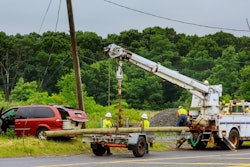
Raise your hand if you’re happy with the workers compensation process. Anyone?
We didn’t think so. General dissatisfaction from employers and employees over the quality and expediency of care under current workers compensation systems is well documented.
While this dissatisfaction has many causes, one theme that repeatedly emerges in qualitative studies is a lack of transparency and a depersonalized system that does not fully address the needs of injured and ill workers in a meaningful and holistic way.
While state workers compensation systems have undergone significant reformation efforts, these have largely focused on financial outcomes through decreasing resource utilization and imposing tighter regulations and fee schedules. Unfortunately, there is a lack of strong evidence that many of these efforts have materially improved either the experience or the care that injured workers receive.
More recently, there has been a growing awareness that workers’ expectations in the aftermath of an injury and their personal experience with the workers comp system have a very significant impact on claims outcomes, from both a medical recovery and financial standpoint. While this concept is not new in general medicine, it has not been systematically addressed in the workers comp space to date and points out the error in the traditional conclusion that the medical severity of an injury will dictate claim length, claim cost and medical recovery. In fact, research in workers comp on the impact of changes in medical fee schedules, utilization and claims costs has shown an inconsistent relationship between the injury severity and cost (Colon & Arnautovic, 2017). Further, among employees with comparable injury types of similar medical severity, there is significant variability in claim length, development of disability, return to work and time to maximum medical improvement (Ashley et al., 2017; Hayden et al., 2019).
Time for a Change
This points to the necessity of a new approach to workers comp care delivery, with a broader understanding of the root causes of claim outcomes. This is particularly true in industries like heavy construction, which place significant physical and psychological demands, in the form of heightened alertness and constant vigilance, on the labor force. Unfortunately, in the construction industry, the psychosocial factors that influence an injured worker’s expectation of, and attitude toward returning to work after an injury are not well defined and therefore tend not to be specifically addressed. This new approach should focus on placing the injured worker at the center of the continuum of care, with an emphasis on building authentic advocacy-based relationships while addressing both their medical and psychosocial needs.
Medical Severity in Workers Comp Cases
The current thinking largely equates the “severity” of a claim with the final cost of that claim. To understand why that is the case, one only must apply the seemingly logical supposition that a more serious medical injury requires greater use of resources, costs more to treat and results in longer recovery and rehabilitation times. While this thinking may be reasonable in an actuarial sense, it conflates the concepts of medical severity and cost, leading to a fundamental flaw in the understanding of what truly drives workers comp claim costs.
In fact, as claim analytics have become more advanced, there is a growing appreciation of the importance of factors beyond medical injury severity. It’s well established that while most claims are medical only, shorter duration claims, the major cost drivers, are a much smaller number of claims with prolonged medical care and disability leading to significantly higher costs. With respect to these latter claims, it is important to note that very few of them are due to catastrophic injuries. Rather they are frequently related to the development of chronic pain and repeated, ineffectual treatments. As employee expectations are emerging as a critical area of importance, researchers are currently investigating how individuals with very similar injuries of similar severity can have such different outcomes. In qualitative research, employee “trust” in the system is often used as a surrogate for employee expectations and it’s apparent that many current workers comp programs fail to support the development of a trusting relationship. This is not an insignificant problem. In fact, the U.S. Department of Labor has said that a lack of trust in the system represents a fundamental threat to the long-term viability of workers compensation programs in general. The Workers compensation Research Institute (WCRI) also identified “trust in the workplace” as potentially playing a critical role in both medical and return-to-work outcomes.
Holistic Approach to Care
Among other implications, this research points to the importance of evaluating and treating injured workers in consideration of not just biological, but social and psychological factors, as well (Robinson, 2014). Creating partnerships between medical providers, employers and employees that emphasizes the importance of these latter components represents an important step toward incorporating value-based medicine into workers compensation treatment models.
Further, research suggesting that a worker’s expectation of recovery in the immediate aftermath of an injury can significantly alter the trajectory of an outcome, either positively or negatively, should inform the development of new treatment models. In construction trades this can be particularly challenging, since they tend to employ a more stoic workforce leading to a general lack of recognition of the impact of an injured worker’s perceived uncertainty on successful return to work and full functional recovery.
Interestingly, general acknowledgement of the importance of employee expectations is not new. Studies focused on early intervention strategies to reduce the demoralization associated with being out of work have shown that employees managed with a focus on supporting employee self-efficacy and early return to work compared to treatment as usual required less days off work despite no difference between the groups in self-reported pain (Cancelliere, 2016; Noonan & Wagner, 2010). Additionally, individuals in early interventions group were eight times less likely to develop chronic musculoskeletal conditions (Noonan & Wagner, 2010). This will likely come as no surprise to medical providers and claims managers whose experience will lead to a tacit understanding of this phenomenon. While several pilot studies have demonstrated success in early psychosocial intervention models, they have yet to be sufficiently incorporated into the construction industry.
Collectively, the current body of evidence suggests that employees trust in the system and expectations regarding the quality of care and anticipated outcomes are crucial, modifiable targets for early intervention with the potential to dramatically influence both medical outcomes and claim length. However, for time-constrained clinicians trained and practiced in purely medical diagnosis and treatment, understanding the nuances of what constitutes a successful outcome from a workers compensation standpoint is challenging.
Systemic thinking that correlates a claim’s success with purely medical and financial outcomes is outdated, incomplete and likely perpetuates the culture of conflict between employers and employees — when in reality, they have the same goals: getting workers healthy and back to work. Consequently, innovative models of treatment are needed to address the care of injured and ill workers across the entire biopsychosocial continuum and bring the goals of the various stakeholders into alignment.
Putting the patient at the center of care by focusing not only on their physical, “medical” care, but their social, emotional and psychological care will result in the best outcomes for employees and employers alike.
References
Ashley, J., Cashdollar, W., Etcheverry, R., & Magill, K. (2017). Transition back to work: policies to support return to work after illness or injury. Available at: https://www.dol.gov/sites/dolgov/files/ODEP/research/saw-rtw/TransitionBacktoWork_PoliciestoSupportRTW_FINAL.PDF
Cancelliere et al. (2016). Factors affecting return to work after injury or illness: best evidence synthesis of systematic reviews. Chiropractic & Manual Therapies, 24(32).
Colon, D., & Arnautovic, N. (2017). Investigating the drivers of the 2015 workers compensation medical severity decline. Available at: https://www.ncci.com/Articles/Pages/II_Medical-Severity-Decline.aspx
Hayden JA, Wilson MN, Riley RD, Iles R, Pincus T, & Ogilvie R. (2019). Individual recovery expectations and prognosis of outcomes in non-specific low back pain: prognostic factor review. Cochrane Database Syst Rev. 2019 Nov 25;2019(11):CD011284. doi: 10.1002/14651858.CD011284.pub2. PMID: 31765487; PMCID: PMC6877336.
Noonan, J., & Wagner, S.L. (2010). A biopsychosocial perspective on the management of work-related musculoskeletal disorders. American Association of Occupational Health Nurses Journal, 58(3), 105-114.
Robinson, T. (2014). WCRI Identifies Trust in the Workplace as a Key “Predictor” of Outcomes Important to injured workers. Available at: https://www.lexisnexis.com/legalnewsroom/workers-compensation/b/recent-cases-news-trends-developments/posts/wcri-identifies-trust-in-the-workplace-as-a-key-predictor-of-outcomes-important-to-injured-workers



















